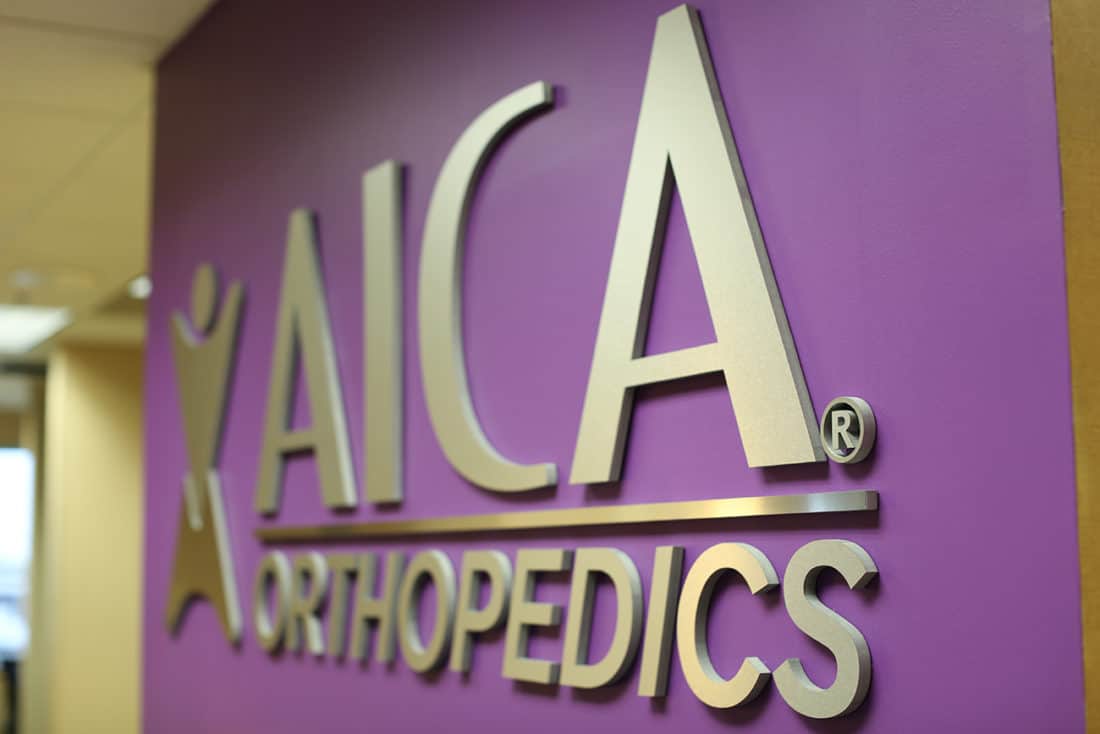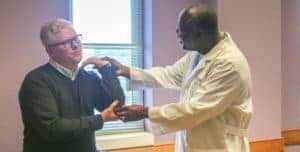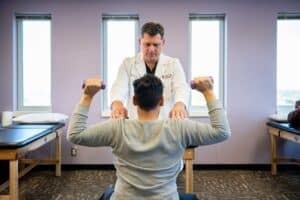Spinal Stenosis
Spinal stenosis occurs when the small spaces within the spine have become too narrow, creating a situation where the nerves within the spine receive a lot of restricting pressure. These narrowing of the spaces between the spine typically takes place in the lower back or neck areas of the spine. Contact our team of specialists to learn more about treatment for spinal stenosis. We have multiple spine doctors available who specialize in diagnosing and performing spinal stenosis surgery. Contact us today to begin the process of finding relief from your spinal stenosis symptoms.
Spinal stenosis is one of the medical condition that has a wide range of symptoms and severities in those that suffer from it. Some individuals who have spinal stenosis won’t have any noticeable symptoms, making it difficult to diagnose, while others may have extreme and painful symptoms of the condition requiring spinal stenosis surgery.
Common forms of treatment for spinal stenosis symptoms are chiropractic, over-the-counter anti-inflammatory medication, cortisone injections, surgery, lifestyle changes, and more.
Causes of Spinal Stenosis
One of the primary responsibilities of the spine is to protect the spinal cord, a series of nerves that allows the brain to communicate with the different bodily systems we use every day. Spinal health is extremely important to your overall health since it houses the central nervous system that keeps your body functioning properly. Anyone can get spinal stenosis and it can come from a variety of different causes:
- Injuries to the Spine –Particularly from high impact accidents like an automobile accident or similar trauma; high impact injuries can cause fractures or dislocations of the vertebrae, which increases the risk of damage of the contents within the spine and spinal canal
- Abnormal Growths – Such as a tumor, usually located on or within the spine
- Ligaments Around the Spine That Have Thickened –These ligaments can invade the spinal canal where they can cause problems to components within the spine
- Disc Herniation –These discs are small, soft cushions that help to protect the vertebrae by acting as shock absorbers; these become less effective as you get older and can crack, causing the interior to spill out and create pressure against the spinal cord and/or nerves
- Overgrowth of Bone – Wear and tear in life and other medical conditions (such as Paget’s disease, osteoarthritis, and more) can cause the formation of bone spurs and general bone overgrowth, which can grow into and press against the spinal canal, creating complications within the spine
Other risk factors can increase the likelihood of getting spinal stenosis, including being 50 years of age or older, trauma, genetic diseases affecting bone and/or muscle development, congenital spinal deformities (such as scoliosis), and more.
Getting Diagnosed for Spinal Stenosis
When you’re uncertain of what is causing the symptoms you’re experiencing, that’s when it’s time to visit a doctor to diagnose the cause. At AICA Orthopedics, our team of specialists will help in identifying the cause of your symptoms. When a doctor suspects spinal stenosis, a number of tests and diagnostic processes will be employed to get to the root of the issue.
- X-rays – helps the doctor observe the shape of your vertebrae and how it may have moved or changed.
- MRI (Magnetic Resonance Imaging) – creates a 3D image of the spine, which is more accurate and detailed than an x-ray; MRIs are capable of showing growths, tumors, and is detailed enough to show ligament and disc damage.
- CT Scan (Computerized Tomography) -after being injected with a specialized dye, an x-ray is done to create a 3D image of the spine and body to identify other damage to the softer tissues within the spine.
Diagnostics
MRI
Should you be suffering from spinal stenosis, your physician or specialist will likely order an MRI to start. With the use of magnetic fields and radio waves, the scanner will produce an image from which your doctor can proceed.
LEARN MORECT scan
In other cases, a doctor will order a CT scan to evaluate soft tissue damage. Sometimes, this scan will be performed with contrast, which just increases the visibility of the stenosis of the spine.
LEARN MORESymptoms of Spinal Stenosis
Symptoms will vary from individual to individual based on a number of factors, such as the type of spinal stenosis or location of spinal stenosis. Not everyone will experience symptoms directly while others will feel more severe intensities of the condition. Common symptoms include numbness, tingling, and/or general weakness in the hand, arm, foot, or leg. Individuals may also experience neck pain, back pain, muscle cramping, and bladder and bowel dysfunction. If you are experiencing any of these symptoms, you should schedule a consultation at AICA Orthopedics right away. Letting any of these symptoms linger or worsen can have a detrimental impact on your body and overall health.
Getting Treatment for Spinal Stenosis
Our recommended treatment will depend on the severity and location of your spinal stenosis. Give us a call or schedule an appointment with our experienced staff of professional doctors and healthcare specialists so we can provide you with the best treatment options for spinal stenosis and its symptoms. Our healthcare team at AICA Orthopedics will help you find relief from spinal stenosis through personalized attention and treatment. Every medical situation is unique and it’s important to get accurate diagnoses and treatment for yours.
Chiropractic
Treatment from a chiropractor can help to alleviate pain and discomfort symptoms associated with spinal stenosis. As a field that focuses on the spine, chiropractic is often a perfect candidate for people experiencing spinal stenosis symptoms. Chiropractors from AICA Orthopedics will help in alleviating symptoms by carefully realigning the spine, which alleviates pressure on the spine, particularly with people suffering from spinal stenosis.
LEARN MORENeurology
Neurologists specialize in disorders and issues related to the nervous system, including the spine. A neurologist’s expertise will be able to pinpoint what is causing pain and discomfort from spinal stenosis, which is often due to compression of or damage to the spine’s nerve roots or cord.
LEARN MOREOrthopedic and Interventional Spine
In some cases, surgery or minimally invasive procedures may be required to alleviate spinal stenosis symptoms. This is usually a final step after other treatment methods have been attempted with no improvement observed. An orthopedic surgeon can discuss if surgery is necessary or if other treatments, medications, and lifestyle changes will be sufficient.
LEARN MOREContact us today at AICA Orthopedics to learn more about diagnosing and treating spinal stenosis. Our team at AICA Orthopedics will recommend which specialists you should see to get an accurate depiction of your spinal stenosis condition.




